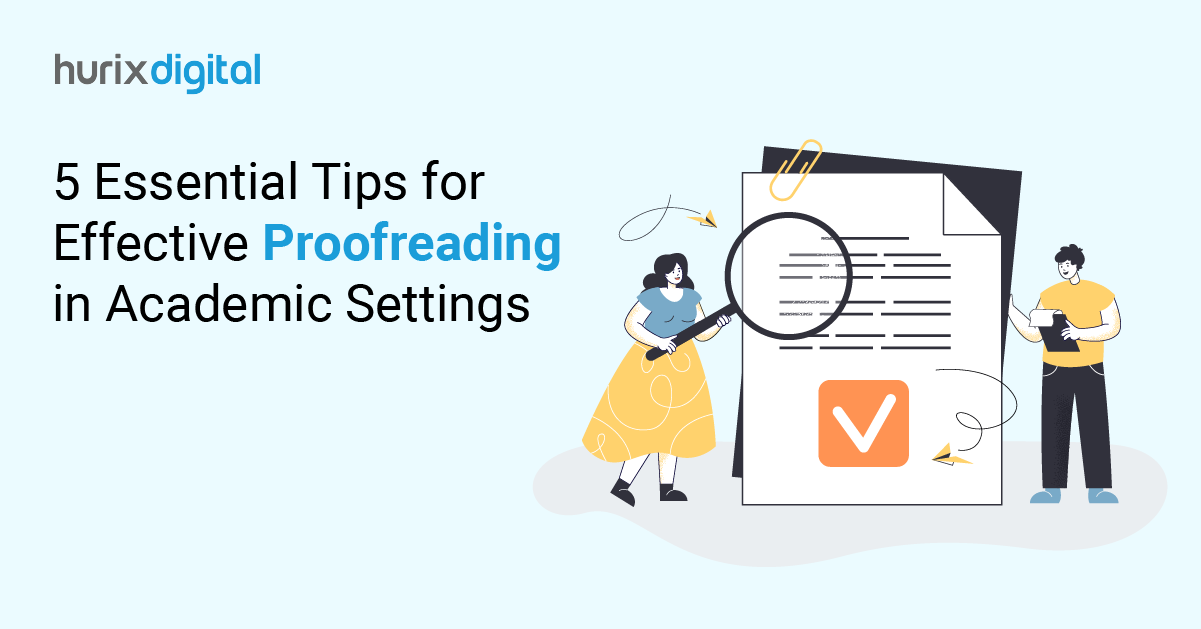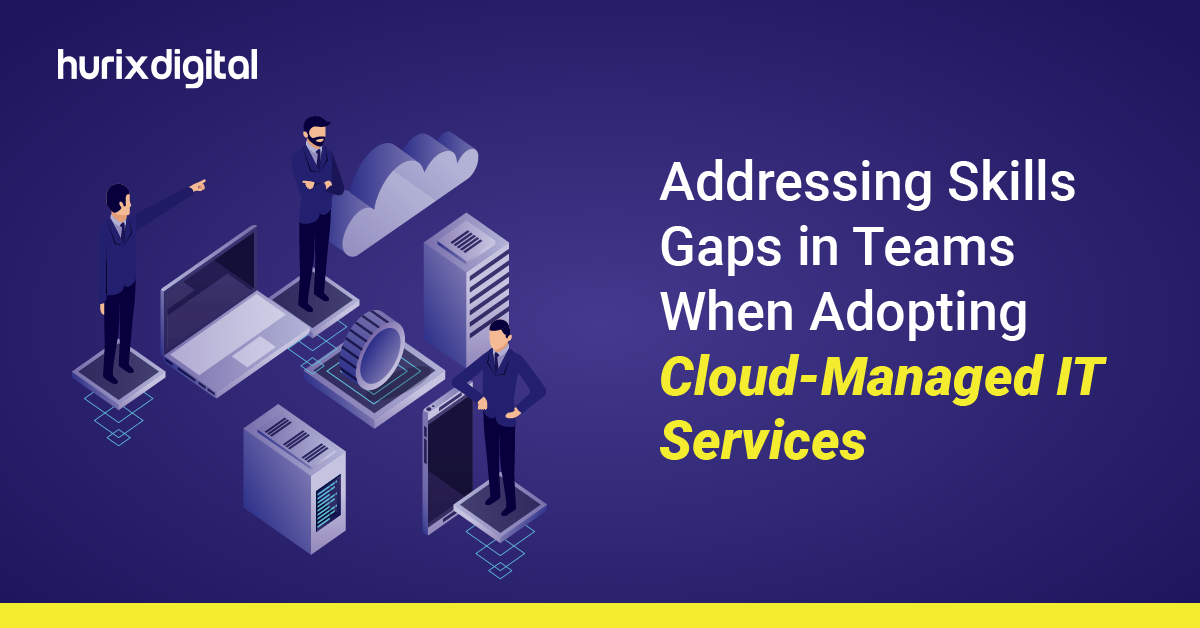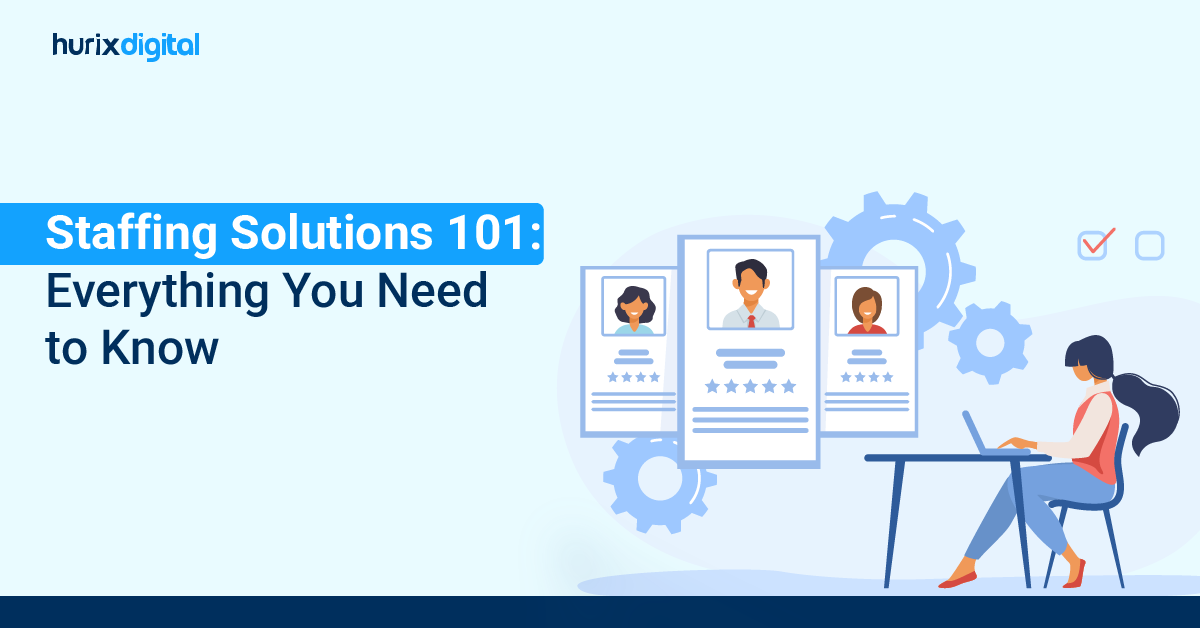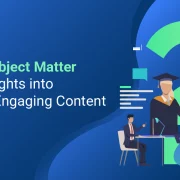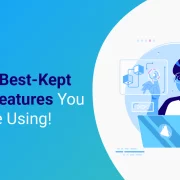
Talent as a Service: How to Hire and Retain the Right Talent in 2025!
Whether you’re a business owner, team leader, or budding entrepreneur, finding the right talent is paramount. Talent as a Service is a game-changer, providing an efficient way of acquiring, developing, and retaining the skilled people that your organization needs.
This 2025 brings new shifts to the hiring landscape and promises a new approach to your onboarding process, which promotes employee engagement and prioritizes culture fit.
So, let’s explore this exciting topic and help you successfully attract and sustain the perfect talent pool.
Table of Contents:
- What is Talent as a Service?
- Key Principles of Talent as a Service
- Importance of Professional Development in Talent as a Service
- How to Hire the Right Talent Using Talent as a Service
- How to Retain Talent in 2025?
- Future of Talent as a Service (TaaS) in 2025
- Summing Up
What is Talent as a Service?
TaaS is a revolutionary approach to hiring and retaining the best employees. It gives you a flexible group of outstanding professionals who can step in at any time there’s a need.
So, think of TaaS as having a large pool of top-notch talent available to help your business overcome challenges whenever required.
Also Read: The Impact of Globalization on Staffing Solutions: Managing International Talent
Key Principles of Talent as a Service
Talent as a Service is a fresh way of getting the right talent while keeping up with the industry standards. You can consider it as a digital talent store where your business can easily choose the skills needed based on the requirements.
Now, the question remains: how can you get the most out of this service? Let’s have a look at the concept in depth:
1. Prioritizing Cultural Fit
For businesses keen on constant growth and innovation, Talent as a Service (TaaS) is key. One vital aspect of TaaS is to prioritize cultural fit when hiring. This means making sure people’s ambitions, values, and attitudes match the company’s ethos.
Understanding a candidate’s approach, conduct, and attitude toward working in a team is important:
- Create thoughtful yet practical interview questions to check their compatibility with the company’s culture.
- Make team interaction part of the interview.
Applying this method ensures a seamless onboarding process and increases employee engagement, resulting in a satisfactory employee experience.
2. The Onboarding Process
One of the key steps to keeping new hires happy and successful is perfecting your onboarding process. This shouldn’t just be a quick rundown of the rules and job tasks.
It’s a great opportunity to immerse new employees in your company’s vibrant organizational culture.
- Kick off with an exciting, welcoming program that shows what your company is all about.
- Set up a buddy system where a seasoned colleague helps guide the new hire. This helps with those early-day jitters and questions.
- Make sure that your new hires are comfortable and sure about what is expected from them. This allows for no frustration or confusion.
3. Employee Recognition
Talent as a Service greatly values praising staff for their hard work. This not only makes employees feel good but also sparks employee engagement and adds to an amazing employee experience.
Here are some ways to appreciate your employees:
- Quick thanks: When you notice good work, say thanks immediately. It motivates employees to keep doing well.
- Praise in public: Sharing an employee’s achievement in front of others boosts their confidence and inspires other team members.
- Custom awards: If you can, give rewards that suit each employee’s likes or hobbies. It makes them feel special.
These kinds of employee recognition practices can nurture a healthy organizational culture and help you keep your best people.
4. The Organizational Culture
Understanding the role of organizational culture in hiring or retaining talent is crucial. It goes beyond simply employing people. It includes creating a work environment that promotes professional development, propels employee engagement, and enhances the employee experience.
- Offering professional development opportunities helps keep top employees happy and updated according to the market standards.
- A workplace environment that appreciates everyone’s effort and consistently offers employee recognition can significantly boost their happiness at work and efficiency.
- Building a positive work environment hinges on open, honest communication. In other words, by fostering a strong organizational culture, you’re essentially prioritizing the Talent as a Service model.
5. Enhancing Employee Experience
We’re in a digital age, and work is changing. So, we should adapt our ways to make our employees’ work life better.
A big part of creating a Talent as a Service model is creating a positive work environment that puts employee well-being and growth first. We can do this by:
- Promoting employee engagement strategies that value everybody’s perspectives, teamwork, and active involvement in the organization.
- Creating more chances for professional development. This helps improve employees’ abilities, fuels their growth, and might even reveal new talents within your team.
6. Boosting Employee Engagement
Boosting employee engagement is a great technique to keep your best talents. It’s not just about celebrating with fun office events. It’s more about clear conversations, helpful feedback, and making the workers feel they’re part of something valuable.
- Make communication straightforward. Let your employees talk openly. This builds trust and raises engagement.
- Offer regular, constructive criticism. Your team needs to understand their performance and the ways to improve it.
- Give a feeling of purpose. If workers sense their work is important, they’re more likely to stay engaged.
Importance of Professional Development in Talent as a Service
Talent as a Service is a popular way businesses take care of the people who work for them. They want to keep their employees happy and help them grow in their jobs.
One way they do this is by focusing on professional development. When companies help their employees learn more and do better in their jobs, their employees want to stay.
Here are some other ways:
- Creating Learning Maps: Companies can create roadmaps that show employees the potential progression of their jobs. This gives the team a clear vision of their career path and how to excel.
- Encouraging Continuous Education: It’s key that all employees pursue constant learning. Organizing activities such as conferences, webinars, online courses, or projects helps them stay updated with the latest standards in the industry.
- Nurturing Potential Leaders: Companies can set up training programs to groom new leadership. With such initiatives, employees feel motivated and keen to take on more responsibilities as they might have a chance to lead the team or company in the future.
How to Hire the Right Talent Using Talent as a Service
Talent as a Service is changing the way companies hire talent.
Here are step-by-step strategies for hiring the right talent:
1. Step 1: Define Your Talent Needs
Begin with your particular requirements for skills, expertise, and roles. Define the scope of work, project duration, and desired outcomes to attract the right candidate.
2. Step 2: Tap into Talent Platforms
Use TaaS platforms to tap into a global talent pool. These platforms offer advanced filters and AI-matching tools to streamline the search process. Share project information and use platform algorithms to find a candidate who fits the company’s requirements.
3. Step 3: Skill-Based Recruitment
Skill-based recruitment refers to hiring employees based on relevant experience rather than traditional employment requirements such as academic certificates and diplomas.
Evaluate candidates based on their practical skills and ability to deliver results. Use skill assessments, project-based tasks, and real-world scenarios to test their expertise. This ensures that the talent you hire aligns perfectly with your project needs and expectations.
4. Step 4: Data-Driven Recruitment Tools
Implement AI-based tools that analyze candidate profiles, skills, and performance to make the correct hiring decision. Predictive hiring solutions can help identify candidates who have the potential to succeed in your organization.
5. Step 5: Use Assessments
Deliver specific assessments, coding challenges, case studies, or simulations to assess a candidate’s practical skills. Simulations are the best way to test a candidate’s real-life problem-solving skills.
6. Step 6: Conduct Structured Interviews
Conduct a structured interview to avoid bias and provide consistency. Prepare standardized questions related to the desired skill or characteristic. A structured interview is twice as predictive of job performance as an unstructured one.
7. Step 7: Review and Optimize Your Recruitment Process
Review your recruitment process periodically for weaknesses. Use metrics such as time-to-hire, cost-per-hire, and retention rates to fine-tune your strategy.
How to Retain Talent in 2025?
Here’s how organizations can retain the best talent in 2025 using talent as a service:
1. Invest in Continuous Learning
Upskilling and reskilling are important for the organization as they improve the competence of its workforce, just as much as they aid the employees by promoting their career advancement. Here are some best practices:
- Provide customized learning paths through solutions such as LinkedIn Learning or Coursera.
- Provide mentorship opportunities by connecting the experienced and junior team members for knowledge transfer.
- Conduct training in-house or collaborate with professionals from other industries for specific upskilling.
2. Promote Engagement and Inclusion
Engaged employees feel valued and included, and thus tend to be more committed to their organization. A positive workplace culture leads to satisfaction and decreased turnover. Conduct team-building activities to improve relationships and a sense of community.
3. Establish Feedback Channels
An open feedback culture and trust encourage employees to voice concerns and be heard, leading to increased satisfaction and retention. Use surveys regularly to identify employees’ pain areas and determine potential issues.
Also Read: How to Use IT Staffing Solutions to Build a High-Performing Team?
Future of Talent as a Service (TaaS) in 2025
Since the world’s business community evolves rapidly in this fast-paced globe, Talent as a Service (TaaS) will transform business workforce strategies.
Here’s how TaaS will rule 2025 and the future of talent acquisition:
1. AI-Powered Talent Matching
Artificial intelligence improves the speed and accuracy of talent selection by considering candidates’ skills, experience, and compatibility with organizational needs.
Advancements in 2025:
- Platforms powered by AI will bring real-time matching to cut hiring time.
- Predictive analytics will forecast workforce needs and ensure that companies start hiring early.
- Through AI-driven TaaS, a specialized blockchain developer is recommended within hours to a tech company for urgent project work.
2. Onboarding Automation
Automation streamlines the hiring process, from contract generation to compliance checks, ensuring smoothness for employers and talent.
- Automated tools will make onboarding easier and reduce administrative costs.
- AI chatbots will answer FAQs, thereby decreasing human interference and saving time.
3. Global Talent Pools
Global connectivity, enhanced by advanced communication tools and remote work technology, allows businesses to transcend geographical boundaries.
2025 Developments:
- Remote collaboration tools with VR will make global teamwork easy and smooth.
- G will help in real-time interaction and, thus, in handling distributed teams.
4. Talent on Demand
As industries become more tech-driven, the demand for niche expertise increases. TaaS enables companies to get access to specialized professionals as needed.
Advancements in 2025:
- Micro-skills-based talent segmentation in platforms will allow accurate hiring.
- Short-term, project-based job dominance will be seen, but highly specialized areas such as AI ethics, quantum computing, and sustainability will be more significant.
5. Ethical Talent Management
As the gig economy grows, ethical issues such as fair pay, inclusion, and adherence to labor laws will emerge.
Advances in 2025:
- TaaS platforms will leverage blockchain to be transparent and secure in payment systems.
- Diverse tools promoting inclusive recruitment and hiring practices will follow.
6. Enhancing Learning and Development
TaaS platforms will become centers of upskilling and reskilling to make sure talent remains competitive.
Advancements in 2025:
- On-demand microlearning modules will be integrated into TaaS.
- Employers will invest in training for gig workers to meet their requirements.
Summing Up
Organizations aspiring to formulate robust strategies for Talent as a Service should essentially place professional development at the heart of their approach.
This commitment to the ongoing development and progression of employees not only enhances their contentment and efficiency but also sets the organization apart as a coveted employer in their sector.
This is where Hurix Digital can help. We help organizations design tailored, scalable TaaS solutions that align with their goals. Our aim is to empower businesses to build agile, future-ready teams and drive lasting success. If you have any questions, feel free to reach out to us—we’re here to help.

Currently serving as the Vice President of Technology Delivery Operations at HurixDigital, a prominent global provider of digital content and technology solutions for publishers, corporations, and educational institutions. With over 16 years of experience spanning EdTech and various domains, I hold certification as a SCRUM Product Owner (CSPO). My expertise includes operations, finance, and adept people management skills.
